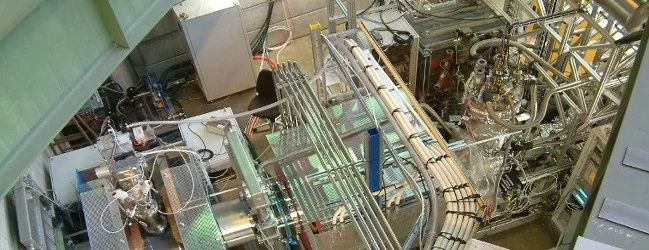
General Introduction
Very slow, nearly 100% polarized, positive muons with a mean energy of about 15 eV can be used as a source of a tertiary beam of tunable energy between 0 eV and 30 keV.
- This energy range corresponds to tunable implantation depths between a fraction of a nanometer and a few hundred nanometers, thus allowing the extension of the µSR techniques to the study of thin films, multi-layers, and surfaces.
- Basic atomic processes like charge exchange, energy loss and scattering in matter can be studied at low energies. Comparing these measurements with known proton or hydrogen data, mass effects and velocity scaling of the corresponding cross sections can be tested.
- A beam of muonium (hydrogen-like bound state of a positive muon and an electron) with low energy spread can be formed by passing low-energy muons through thin foils or gas targets. The muonium atom is an ideal system for precision spectroscopy in order to test the validity of Quantum Electrodynamics (or to measure fundamental constants like the muon mass or the muon magnetic moment), since the leptonic constituents of muonium behave as pointlike particles.